Review: 2013 Mercedes-Benz GLK350
We’re all familiar with the Mercedes-Benz GLK, from its new-for-2010-looks-like-2002 exterior to its “they want how much for this?” interior. But the fourth model year is MCE time. Mid-cycle, has Stuttgart enhanced its compact crossover enough that previous rejecters should reconsider it?
This being an MCE, the “aimed for G-Wagen, hit late-model Forester” metal hasn’t changed. More Volvo than any post-Horbury Volvo, it remains the yang to the Audi Q5’s yin. New light assemblies and fascias address an LED deficit (and then some) while taking the box they append uptown.
Mercedes got the message that many people (or at least many reviewers) found the original GLK interior overly basic, to put it kindly.
The revised interior has more soft surfaces and looks more worthy of a price north of forty. Plain, hard-edged black plastic surfaces are out, displaced by some subtle curves (though the basic forms remain blocky), additional wood trim, and many not-so-subtle chrome bits. The new white-ringed instrument faces are classier. Unless it’s dusk, when the main thing you’ll notice is how hard it is to read silver digits on a white background.
Before you get carried away by visions of opulence, realize that the seat cushions remain flat and firm. Rear legroom also hasn’t changed, and so remains short of the segment average. A six-footer will fit behind a six-footer even if they’re wearing tall hats, but shins will be grazed. If you need more space, a dealer will happily show you something in a larger size.
The GLK brochure proclaims the “SUV embodiment of a sport sedan’s soul.” From the start, the fundamentals have been present: a big V6, nearly balanced weight distribution, and 19-inch wheels shod with low-profile rubber, all as standard equipment. For 2013, the V6 receives direct injection and a power bump from 268 to 302. Lay into it, and the GLK350 will scoot, but the powertrain’s initial response isn’t snappy as engine remains paired with an aging (if updated) seven-speed automatic. The newly offered (and standard) shift paddles don’t help. Add in the need to hit a button on the console to activate them (the P-R-N-D shifter is column-mounted), and they might as well sign up for unemployment.
The 2013 GLK’s retuned suspension feels tighter than I recall from the one one I drove two years ago. Body control is up while lean in hard turns is down. The steering, now electric-assist, contains less slop than the previous hydraulic unit while providing a similarly low level of feedback. Drive the GLK the way such vehicles are typically driven, and it behaves well, with the ride quality and quietness people expect from a premium brand and the evident solidity people expect from a Mercedes. Push the ute, though, and you’ll discover limited grip as the outside front Latitude Tour HP scrubs and a non-defeatable, far-from-transparent stability control system jerks your chain. If you’re looking for fun, you’re much more likely to find it in the competing Audi, BMW, Infiniti, or Volvo.
Fuel economy has also been enhanced. In addition to direct injection and electric-assist steering, the GLK350 has gained an automatic start/stop system. Unlike Munich’s contraption, which produces shudders unbecoming any machinery this side of a Tata Nano, Stuttgart’s operates almost imperceptibly. The EPA ratings of 19 mpg city, 24 highway might seem less than impressive, but they’re considerably better than last year’s 16/21! (Unlike with an Audi Q5 or BMW X3, but like the Infiniti EX37, you can get rear-wheel-drive. The EPA highway figure is then 25.)
Like Toyota’s hybrids, the updated GLK grades your driving. The grades are more precise than in a lowly Prius c—out of 100 rather than on a five-point scale—yet they are considerably less helpful. In a Prius c, the grades are for the current accelerate-cruise-brake cycle. In the Mercedes, they’re for the entire period since the car was started or the system was manually reset. Consequently, the link between what you do and the grade you receive is far less intuitive. You start out with a 50. From there, it’s easy to sink your score into the teens, and surprisingly difficult to nudge it over 80. On one suburban drive I managed a 98 with a feather-light foot and a sharp eye for anything that might require the brakes. The trip computer reported 28 mpg. When paying less attention to my driving, but still driving far from aggressively, the trip computer reported a score in the 40s and about 21 mpg. If your foot is at all heavy you won’t observe north of 20 in the suburbs, with 16-17 a very real possibility. Require better fuel economy? A GLK250 BlueTec powered by a 190-horsepower, 2.1-liter diesel arrives next spring.
Of course, most people don’t buy Mercedes for how they handle or how far they go on a gallon. What likely matters most—beyond the three-pointed star—is the amount of technology packed into the vehicle, and especially that focused on safety. To remind you of the priority the GLK puts on your well-being, the front seat belts are given a very firm tug each time you start the car.
Every redesigned or refreshed Mercedes beginning with the 2010 E-Class has received a drowsiness monitor as standard equipment. The system works entirely by evaluating the frequency and amplitude of steering corrections. So, if you are not aware that you’re falling asleep, a “coffee cup” icon below the speedometer will inform you.
Blind spot and lane departure warnings are available in passive and active forms. In “active,” the system doesn’t only warn you via a large graphic between the tach and speedometer. It also selectively blips the brakes and tugs the wheel to help get the car back where it’s supposed to be. I found the blind spot system helpful, perhaps because the warning light in the mirror alone was sufficient and I never tripped the “active” level. The lane departure system, on the other hand, proved a PITA. Touch the lane marker (quite easy to do with the one on the blind side) and you’d think death was imminent from the strength of the system’s reaction. To be fair to Mercedes, I haven’t yet encountered a lane departure system that wasn’t a nuisance. This one was only the most intrusive of the bunch.
The optional adaptive cruise control impresses, even in traffic. On some of my trips around town I let the GLK do most of the driving. (The car gave its own driving style a grade of 46%.) Even if it’s not on, the Distronic system will sound a warning if you approach the car ahead too quickly. If you don’t react, it will attempt to stop the car itself. In a major ergonomic revolution (for Mercedes, at least), the turn signal and cruise control stalk have swapped positions. I made it through the entire week without setting the vehicle speed in an attempt to signal.
The GLK is also now able to steer itself into a parallel parking space. Unfortunately, life in the burbs provided no opportunity to test this system.
The Lighting Package now includes, in addition to steering-linked xenon headlamps, “adaptive highbeam assist.” Theoretically, this means that the car determines the appropriate and safe amount of forward lighting, and automatically provides it. In practice, it meant I had to switch the lamps out of “auto” to get the high beams. In “auto,” the car almost always rescinds your request for the brights the moment you release the stalk.
On the infotainment front, the GLK can now connect you to news, Google search, Yelp, Facebook and (when parked) the entire Internet for $14 a month on top of the $280/year basic “mbrace” telematics fee. Yes, it all costs money. Load up a GLK350, and the price jumps from $39,995 to the tested car’s $55,015. Even at this price the tested GLK lacked proximity key ($650), premium audio ($810), an Appearance Package (20s, shiny roof rails), and an AMG Styling Package that includes the previous and adds more aggressively styled fascias and wheels ($1,990). For the sake of comparison, let’s add the first two options, yielding an MSRP of $56,475.
This only seems like too much money for a compact SUV until you compare the competition. A loaded BMW X3 xDrive35i lists for $620 more—and running both through TrueDelta’s Car Price Comparison Tool finds that over $3,000 of the stuff on the Benz isn’t available on the BMW. Adjust for this, and the BMW is $3,700 higher. An Audi Q5 3.0T lists for a scant $45 more. But back in the 1990s, the idea of an Audi costing even a dime more than a Mercedes would have been written off as just another one of Piech’s insane ambitions. After adjusting for feature differences the Audi is $500 more. Of course, if you’re willing to go non-German, an Infiniti EX37 or a Volvo XC60 is about $3,000 less. Or, if you don’t need 300+ horsepower, the 240-horsepower X3 xDrive28i is about $1,200 less than the GLK while the 211-horsepower Q5 2.0T (not available with some of the 3.0T’s pricey options) undercuts a similarly decontented Mercedes by about $4,000.
Which leaves us where? Those who liked the GLK’s exterior before will like it more now. Those who didn’t like it before most likely still won’t, unless their issue was insufficiently fancy lights. Performance and handling have both improved, but not by enough to win over driving enthusiasts. The array of available technology could impress some people. Competitors offer many of the same features, but the GLK could have the most in the class, at least for now. Most of all, though, the dramatically upgraded interior could warrant another look. When you think of how people actually use this class of vehicle, an upscale look and feel matters a great deal, and the 2013 GLK is a much more credible luxury vehicle than the 2012 was.
Mercedes-Benz provided a GLK350 with insurance and a tank of gas.
Michael Karesh operates TrueDelta.com, an online provider of car reliability and real-world fuel economy information.
Michael Karesh lives in West Bloomfield, Michigan, with his wife and three children. In 2003 he received a Ph.D. from the University of Chicago. While in Chicago he worked at the National Opinion Research Center, a leader in the field of survey research. For his doctoral thesis, he spent a year-and-a-half inside an automaker studying how and how well it understood consumers when developing new products. While pursuing the degree he taught consumer behavior and product development at Oakland University. Since 1999, he has contributed auto reviews to Epinions, where he is currently one of two people in charge of the autos section. Since earning the degree he has continued to care for his children (school, gymnastics, tae-kwan-do...) and write reviews for Epinions and, more recently, The Truth About Cars while developing TrueDelta, a vehicle reliability and price comparison site.
More by Michael Karesh
Latest Car Reviews
Read moreLatest Product Reviews
Read moreRecent Comments
- Jrhurren Worked in Detroit 18 years, live 20 minutes away. Ren Cen is a gem, but a very terrible design inside. I’m surprised GM stuck it out as long as they did there.
- Carson D I thought that this was going to be a comparison of BFGoodrich's different truck tires.
- Tassos Jong-iL North Korea is saving pokemon cards and amibos to buy GM in 10 years, we hope.
- Formula m Same as Ford, withholding billions in development because they want to rearrange the furniture.
- EV-Guy I would care more about the Detroit downtown core. Who else would possibly be able to occupy this space? GM bought this complex - correct? If they can't fill it, how do they find tenants that can? Is the plan to just tear it down and sell to developers?






























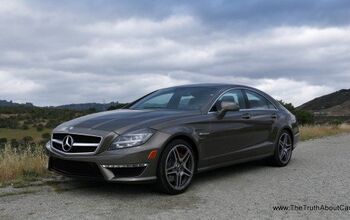
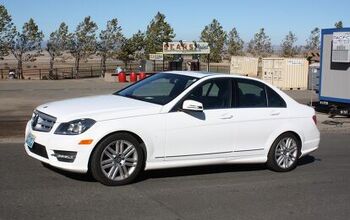
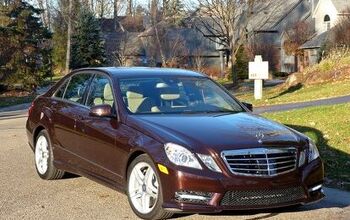
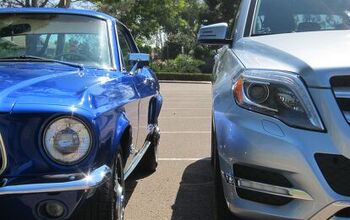
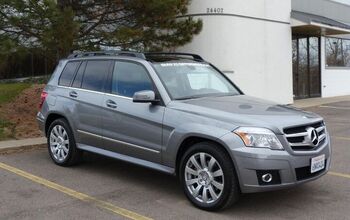










Comments
Join the conversation
Thanks For sharing informational article.. I have a c300 and I am looking for a site that sells mercedes benz brand parts? I am looking for brakes and rotors. finally I found one site. The best quality parts are from your nearest Mercedes-Benz dealer, of course. If you want. to save some money, http://MBZPARTS.com is by FAR the best for OEM parts -- that is, parts made by the same. manufacturer who makes it for Daimler. That said, are you looking for some kind of "upgrade", or if you do honestly need new parts, get here. They cost much less than the dealer part and are better.
nice